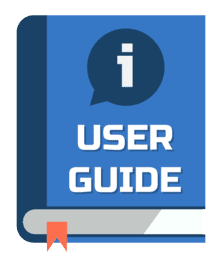Time Pressure Effect on the Creative Behavior of Medical Personnel Mediated by Learning Orientation
Abstract
In the medical world, time in handling for patients contributes positively to the patient's recovery. However, doctors have a lot of work to do, so it can cause stress. On the other hand , the variety of patient complaints, how doctors interact with patients, the emergence of new diseases, new cases, new drug findings, the creation of new technology, and the existence of new treatment methods require doctors to be more creative in channeling their knowledge to complete their tasks.. The purpose of this study is to analyze the influence of time pressure on creative behavior, mediated by learning orientation in medical personnel at RSUD dr. Moewardi Surakarta. This study is an associative study using SEM-PLS. The sample was taken by 130 doctors. Using SmartPLS 3.3.9, the study found that time pressure had a positive effect on creative behavior. Learning orientation can mediate the influence of time pressure on creative behavior.
Full Text:
PDFReferences
Binnewies, C., Sonnentag, S., & Mojza, E. (2009). Daily performance at work: Feeling recovered in the morning as a predictor of day-level job performance. Journal of Organizational Behavior, 30, 67–93.
Bunderson, J., & Sutcliffe, K. (2003). Management team learning orientation. J. Appl. Psychol, 88, 552–560.
Claessens, B. J., Van Eerde, W., Rutte, C. G., & Roe, R. A. (2007). A review of the time management literature. Personnel Review, 36(2), 255–276.
Fay, D., & Sonnentag, S. (2002). Rethinking the effects of stressors: A longitudinal study on personal initiative. Journal of Occupational Health Psychology, 7, 221–234.
Finfgeld-Connett, D. (2008). Meta-synthesis of caring in nursing. Journal of Clinical Nursing.
Gardner, D. (1986). Activation theory and task design: An empirical test of several new predictions. Journal of Applied Psychology, 71, 411–418.
Greggs-McQuilkin, D. (2004). The power of self-motivation. Medsurg Nurs.
Kotter, J. P. (1982). What effective general managers really do. Harvard Business Review, 60(6), 156–167.
Macan, T. H. (1994). Time management: Test of a process model. Journal of Educational Psychology, 79(3), 381.
Ohly, S., & Fritz, C. (2010). Work characteristics, challenge appraisal, creativity, and proactive behavior: A multi-level study. Journal of Organizational Behavior, 31, 543–565.
Rostami, A., Gabler, C., & Agnihotri, R. (2019). Under pressure: The pros and cons of putting time pressure on your salesforce. Journal of Business Research, 153–162.
Shalley, C. E., & Gilson, L. L. (2004). What leaders need to know: A review of social and contextual factors that can foster or hinder creativity. The Leadership Quarterly, 33–53.
Shumylo, M., isayeva, o., khmilyar, i., huziy, i., yaremko, h., & drachuk, m. (2022). Creativity as an essential aspect in medical education. Creativity studies, 15(1): 182–198.
Thompson, Dalgleish, & Bucknall. (2008). The effects of time pressure and experience on nurses risk assessment decisions: a signal detection analysis. Nursing Research, 302–311.
Refbacks
- There are currently no refbacks.
@2017-2024
Jl. Hayam Wuruk No. 34-38 Bandung
Politeknik STIA LAN Bandung
Powered by OJS (Open Jounal Systems)


